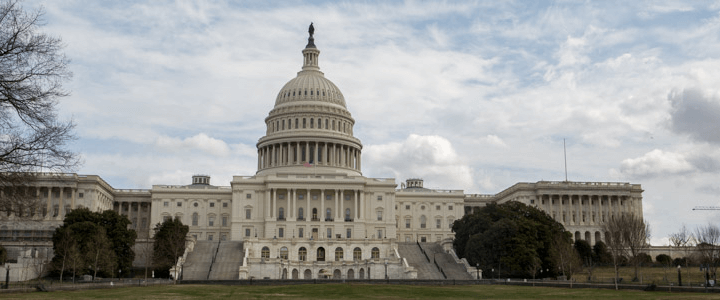The size of the part of the Federal budget dedicated to defense was front and center on Capitol Hill, as the House of Representatives debated the annual National Defense Authorization Act. Among the more than 200 amendments offered by Congressmen was one from Democrat Rep. Mark Pocan of Wisconsin to increase non-defense discretionary spending “dollar for dollar” with defense spending .
Pocan, a member of the Budget Committee, stated in the amendment that non-defense spending aided national security by supporting “health care for our veterans, research to tackle cancer, safe highways, airports and waterways, economic security for families in need, and robust law enforcement.”
Although Pocan authored the amendment, Washington Democrat Pramila Jayapal brought it to the floor, saying “Because genuine national security depends on the health, vibrancy, and safety of our communities, we must ensure that the spending parity continues and that this Democratic Party principle carries on into fiscal year 2018.”
“FUNDAMENTALLY WRONG AT EVERY LEVEL”
This amendment elicited a strong reaction from Rep. Mac Thornberry (R-Tex.), chairman of the House Armed Services Committee, who said it “holds the military hostage to a domestic political agenda,” which he believes is “fundamentally wrong at every level.”
This prompted a response from his HASC counterpart, Ranking Member Adam Smith (D-Wash.), who said, “there is nothing political about a domestic agenda.” Smith argued that the extra $54 billion the Trump administration proposed for defense was directly tied to an equal reduction in domestic spending.
In his statement from the floor, later repeated in a HASC press release, Thornberry argued that military spending ought not be “tied to a domestic political agenda on the EPA, the IRS, education, [or] transportation.” Those issues, he said, must “stand on their own merits,” just as defense spending does.
The amendment failed by a vote of 179 for and 245 against. But it reignites a long-simmering debate over the size of the defense budget.
DIVIDE ON DEFENSE SPENDING OFTEN DEFIES PARTY LABELS
There was a time when the easiest way to tell the difference between a Democrat and a Republican was their attitude towards defense spending. Cold warriors will remember the pithy 1980s slogan, “I dream of the day when our schools have all the money they need, and the Pentagon has to hold a bake sale to buy a bomber.”
The terrorist attacks on 9/11 not only pushed that divide below the surface, they upended the dynamic. Even when Democrats controlled the White House and Congress, debate over funding for Overseas Contingency Operations (which the Pocan amendment would have counted in its dollar for dollar calculations) was largely confined to making sure our service members on the ground got what they needed to continue the fight.
The Budget Control Act of 2011, which brought us the budgetary handcuffs known as sequestration, exposed a rift between budget hawks and defense hawks that largely defies the traditional left-right divide. In a November 2015 Republican presidential primary debate, Sen. Rand Paul of Kentucky criticized his Florida colleague Marco Rubio’s calls for increased defense spending. “How is it conservative,” Paul asked, “to add a trillion dollars in military expenditures? You can not be a conservative if you’re going to keep promoting programs that you’re not paying for.”
But on Thursday, the HASC pointed to a new Heritage Foundation study that argues “Defense spending levels should be determined based on U.S. national security requirements, not arbitrary spending comparisons.” Heritage was referring to comparisons to other countries’ spending, but it could just as easily have been talking about the comparison between defense and domestic spending.
That divide may be under control within the House Republican caucus, which appears set to pass Thornberry’s defense bill, raising spending above both the administration’s request and Budget Control Act restrictions. The increased spending faces a tougher fight in the Senate, where Republicans will still need Democrat votes, and the votes of Republican deficit hawks, to pass the measure.
What is the proper level of defense spending? Continue the conversation in the comments section below.



